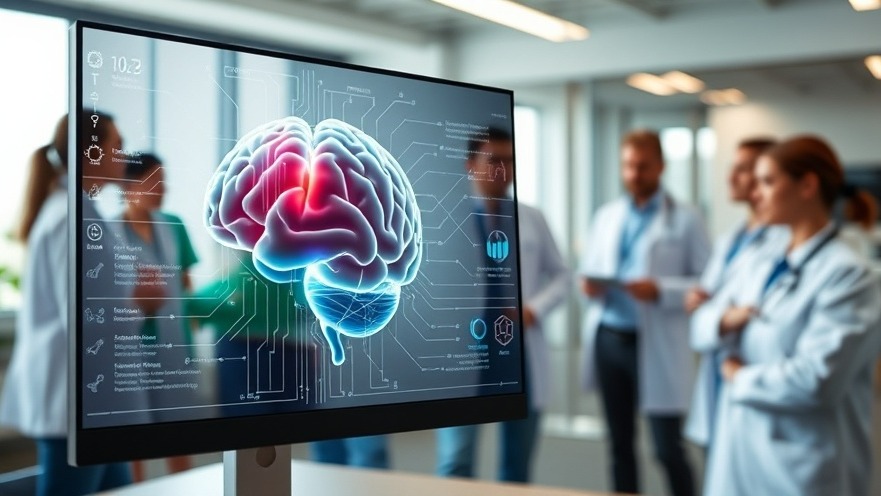
A Revolution in Neurotechnology: The Open-Source Solution for Visual Brain Implants
Researchers from the Netherlands Institute for Neuroscience, in collaboration with multiple universities, have introduced an open-source tool designed to revolutionize the placement of visual brain implants. This innovative research, published in the Journal of Neural Engineering, aims to address the critical challenge faced by approximately 40 million people worldwide who suffer from blindness, a number which is expected to increase in the future.
Understanding the Personalized Approach to Brain Implants
The essence of this tool lies in its ability to optimize the positioning of implants on a personalized basis. As Antonio Lozano, a co-author of the study, states, "Everyone's brain is different, so not every array or chip-design will be suitable for every person." By taking into account individual brain structure and visual needs, the tool utilizes a Bayesian search algorithm to ensure the most effective placement of the implant.
This includes accounting for critical factors such as the total area to be covered and optimizing for maximum yield, which means reaching the highest number of nerve cell bodies present in the area. In essence, the tool provides a way for neurosurgeons to tailor implacement solutions that can significantly enhance the patient's quality of life.
Overcoming Limitations with Advanced Technology
Traditional methods of implant placement often rely on time-consuming manual techniques that introduce variances and risks associated with human error. The newly developed tool dramatically changes this narrative through advanced imaging techniques that allow for a more accurate visualization of brain structures. Lozano mentions, "Our tool does not require much computing power, but it is very efficient." This efficiency stands to revolutionize how neurotechnology researchers and clinicians approach implant placements.
The algorithm employed by Lozano and his team can predict visual outcomes based on implant placement within the visual cortex, making the process systematic and less prone to errors. It promises to reduce surgical time and improve patient outcomes significantly.
Implications for Future Treatments and Research
The broader implications of this tool reach far beyond just improving visual implants. As research in neurotechnology continues to evolve, the potential applications for this open-source tool could influence how we understand and innovate around brain functions as well. For instance, it could lead to better approaches in both neuroscience and artificial intelligence, merging the two fields for enhanced medical solutions.
Furthermore, the user-friendly design of this tool opens barriers for collaboration among researchers globally. By democratizing access to this technology, Lozano's team is paving the way for laboratories and medical professionals to adopt and adapt this innovative solution rapidly.
Enhancing Surgical Precision: The Safety Factor
Safety remains a paramount consideration in brain surgeries, and Lozano’s tool incorporates crucial safety constraints into its functioning. Identifying safe zones for implant placement is critical; the tool ensures that placement avoids damaging any veins that cover the visual cortex. As Lozano emphasizes, "Damaging any veins must be avoided at all costs." This careful attention to safety strengthens the tool’s value in clinical environments.
Bringing the Technology to Clinical Trials
While the tool is already available for use by medical practitioners, Lozano aims to refine its capabilities further. Future modifications may involve flexibility in regard to varied implant types or novel materials. His commitment to continuous improvement highlights the dynamic nature of neurotechnology today. He asserts that as more information becomes available through research and clinical application, this tool will evolve, potentially offering new insights into safe and effective implant placements.
Ultimately, as the adoption of visual brain implants broadens and enters clinical trials, the tool stands as a critical asset in the push for more effective neurological treatments. Lozano excitedly concludes, "We want to make this technology as useful and as safe as possible for many people. That’s why we’re emphasizing its large scale. I definitely think this will be very useful." He emphasizes that the results anticipated from this technology not only hold promise for the treatment of visual impairments but could also alter approaches to various other neurological disorders.
Conclusion: The Open-Source Future of Neurotechnology
This development in optimizing visual brain implants embodies a significant step in neurotechnology and the open-source movement. By integrating advanced algorithms and fostering collaboration among scientists, the potential to enhance patient care and expand the boundaries of medical science is unprecedented. For health practitioners keen on staying ahead of technological advancements that could impact patient outcomes, this tool exemplifies the convergence of innovation, personalization, and surgical safety.
Stay informed about this advanced technology, as it promises to change the landscape of treatments for neurological conditions. By adapting tools like these into everyday practices, health practitioners can offer more tailored and effective solutions to their patients experiencing visual impairments.
 Add Row
Add Row  Add
Add 




Write A Comment